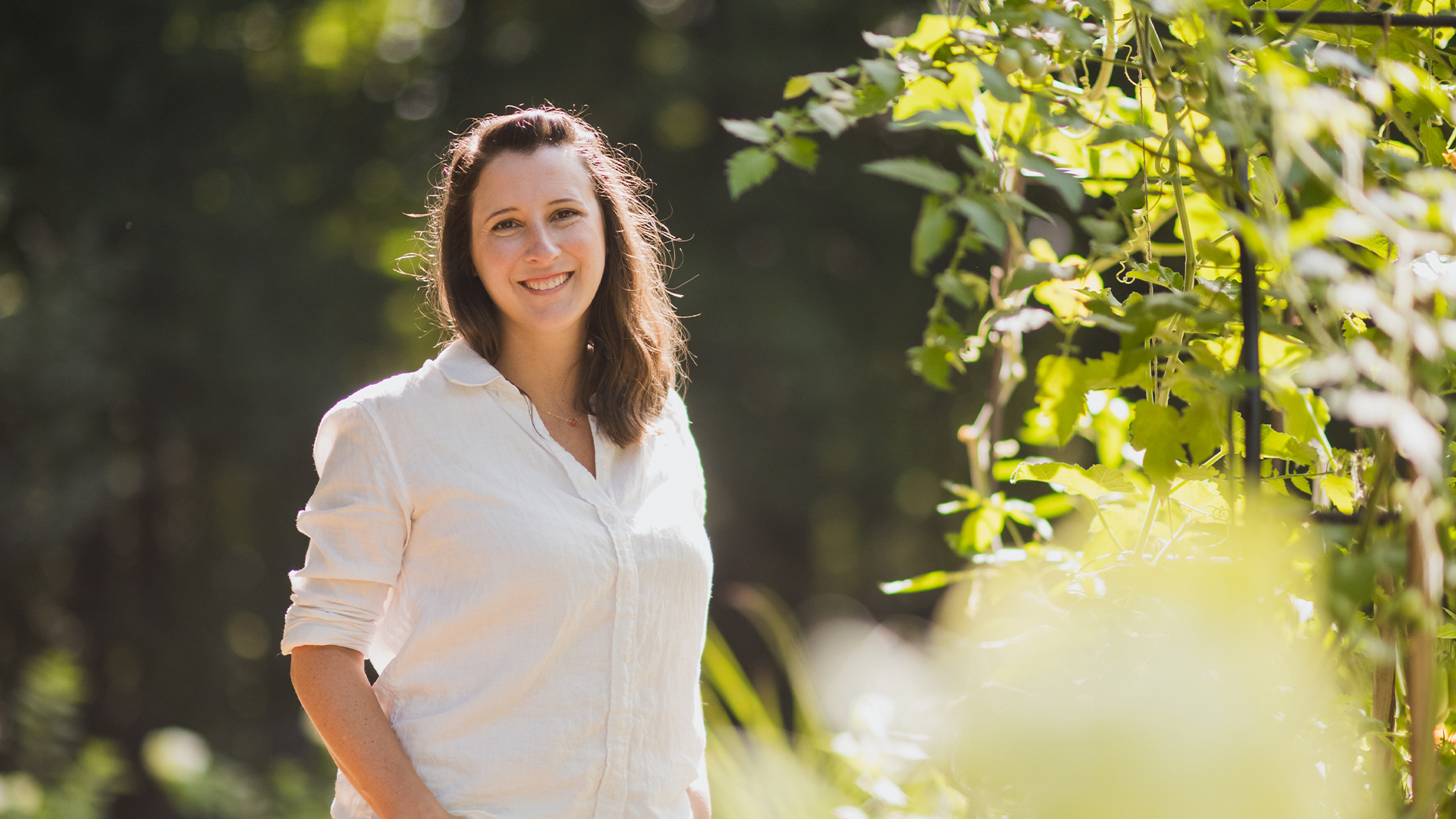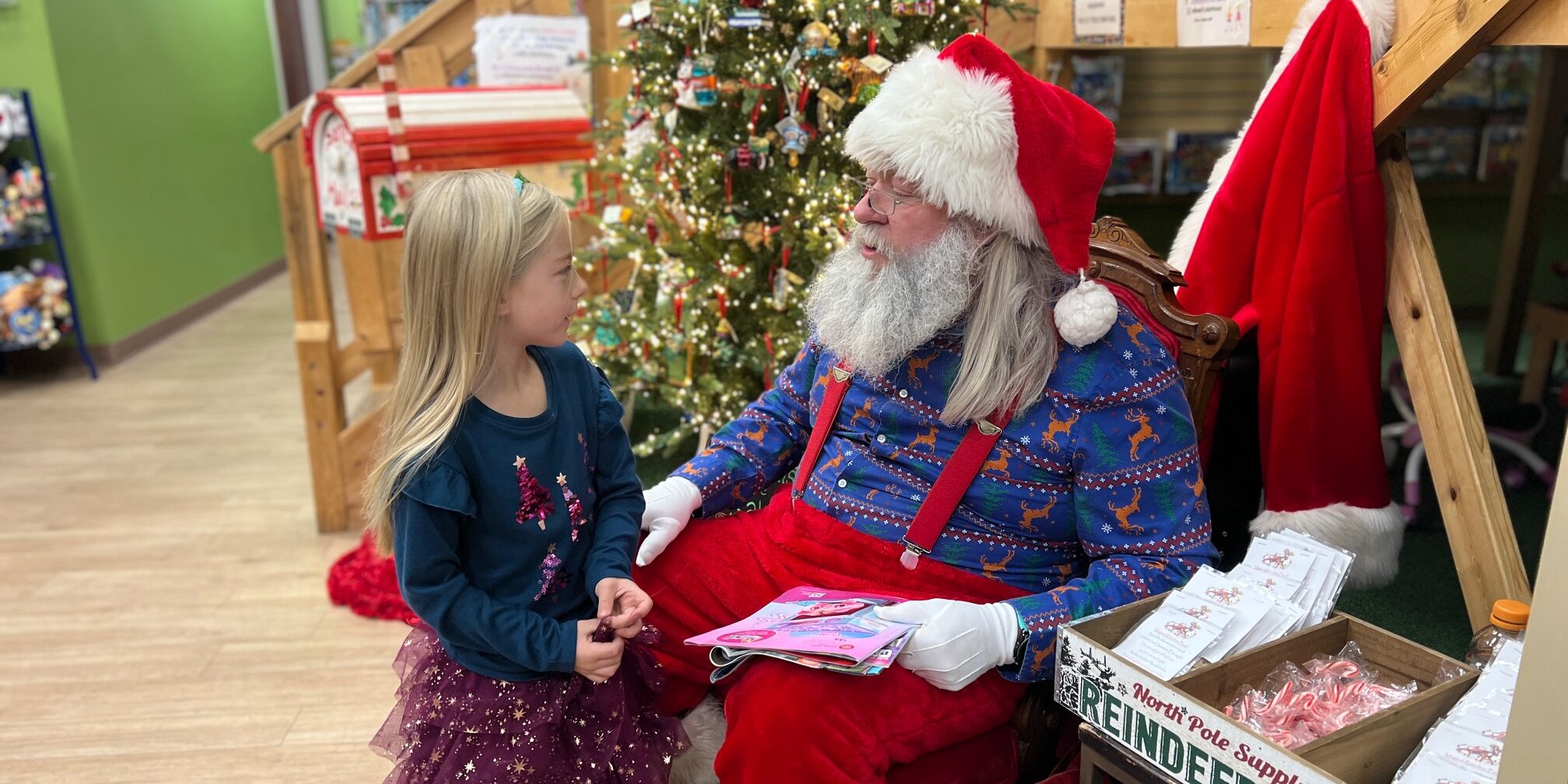World
Gardening Made Simple

Tiffany Deluccia ’10 was drawn to gardening on a whim but quickly discovered her passion for growing and experiencing nature in new ways. Inspired by her journey, she wrote The Uncomplicated Gardener to help beginners embrace the joy of gardening in six simple steps. In this interview, Deluccia gives us a behind-the-scenes look at the publication, plus the garden that inspired it.
Why did you write a book about gardening?
I wrote The Uncomplicated Gardener to encourage beginners — people who are interested but apprehensive — to start growing plants. People often feel there is too much to learn before they can find success in tending a garden. My own journey from “not a gardener” to “forever a gardener” was uncomplicated. I intentionally made this book very small and practical so it would be approachable to a beginner.
How and when did you start gardening?
I started gardening a few years after I bought my first home — around 2013. I would love to say it was motivated by a desire to reclaim my family’s gardening heritage, but it truly came about on a whim. I saw a little raised bed kit at a big box store beside the seed packet display and decided to give it a try.
What do you love about gardening?
I love the mystery and magic of gardening. I am strategic and systematic by nature, but in the garden, I find myself leaning into whimsy and wonder. It makes me feel connected to nature and the seasons — the whole melodious infrastructure of the natural world. I love having a hobby that draws me outside and away from screens year-round.
Do you have advice for planting this fall?
Plant garlic! Mid-to-late October is a good time to plant garlic in Upstate South Carolina. It is extremely low maintenance and pest-resistant — and it looks beautiful in the garden all winter.
Tell us about your garden.
I grow vegetables and fruits in two raised beds connected by an arch trellis along one side of my house, although I consider my whole property to be a garden. I live on 1 ½ mostly wooded acres, and it has been fun to learn and catalog the native ferns, sedges and wildflowers while working to remove invasive species like privet, stiltgrass and ivy that have been left unchecked for 30 years.
My fruit and vegetable garden is visible from the front yard, so I carefully planned the landscaping around it to connect to the overall design of the property, incorporating fruit trees, blueberry bushes, hydrangeas, grasses and wildflowers to draw in pollinators.
What is your greatest gardening success and failure?
For the last eight years, I have successfully grown a variety of heirloom cherry tomatoes (originally called “blue berries” from Wild Boar Farms) from seeds I save myself. As a gardener, the first time you save your own seeds and use them to successfully germinate new plants the next year, it is an incredible feeling.
I do not believe there is failure in gardening. It is all learning and discovery, and once new gardeners reframe the definitions of success and failure in their minds, they will find joy in the process. Last fall, cabbage worms gave me fits, but my daughter saw this “failure” as an opportunity. She put the worms in jars with shredded broccoli leaves from the garden and successfully nurtured them through their life cycle from worms to moths. I would have preferred to destroy them, but wow, it was a magical experience for her to raise and release the moths.
Tell us about the publishing process.
I worked with a small-batch, independent publisher in Greenville, South Carolina, called Good Printed Things, founded and run by Lib Ramos. In all her projects, Lib connects local writers and artists to collaborate on beautiful and meaningful work. She discovered my writing on Instagram and Substack, and we connected over a shared love of gardening. We put our heads together on a few ideas, and this project was the result!
How did your Clemson education prepare you for this work?
As a communication major, my coursework taught me how to identify stakeholders and develop strategies to reach them through effective communication. The principles I learned as a student laid the foundation for my career in marketing communications.
For this project, I identified my audience and wrote the marketing copy first. I did this to ensure the content would meet the needs of my stakeholders. Then, I worked backward to write the booklet content. This allowed me to keep my content and goals for the audience aligned throughout the process.
Could you share advice for those who are interested in publishing?
Don’t wait to start! Publish online, take it slow and hone your message. Your first idea is rarely the one you want to live in print forever. Good ideas emerge as you put content out there and see how people respond. For me, follow-up questions to my early writing identified the need and theme for this book.
Do you plan to publish anything in the future?
Definitely! I have a lot of other ideas I would love to work on in the future, but for now, I’m taking my own advice and writing weekly on Substack.










